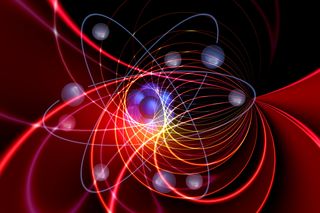Quantum Entanglement And Innovation In An Instant
Einstein called it spooky, but today, it’s just a part of innovation.

Yes, quantum entanglement.
Today’s technological world is doing something fascinating beyond crafting new products and innovative thinking. Part of the magic is the actual diffusion of innovation into a system. Back in the “old days,” we would establish this dynamic around the terms “innovation hub” or “center of excellence.”
And as time passed, these new ideas would make their way into a system or market. The propagation of the ideas would be a function of the speed of the “waveform,” as well as the viscosity or resistance of the medium. Simply put, the adoption of innovation was largely a function of time.
But what does this have to do with what Albert Einstein called “spooky?” His reference to quantum entanglement or action at a distance has captured physicists and thinkers for generations. So, let’s take a step back.
In the lab, we can take a subatomic particle and split it into two components that travel off like two billiard balls. When we measure one particle, this instantly impacts the other, regardless of the distance. In other words, what happens to one particle happens to the other—instantly!
Now, take a breath and think about that for a moment and get a sense of this not so instantaneous realization. The two particles seem to communicate—send a message to each other that aligns this change. The time for this message, regardless of the distance between the two, is zero. The transmission of data is faster than the speed of light, which violates a fundamental rule of nature. You can dig a little deeper into action at a distance here and see just how spooky it is.
So, what does this have to do with innovation?
The diffusion of innovation in today’s technological world is a bit like “action at a distance.” The flow of information and even cognitive processing is faster and faster to the point that we are seeing a virtual exploding of information into the “infosphere.” From a medical breakthrough to Elon Musk’s CyberTruck becoming a viral sensation, data’s arrival is less about later and more about now. And because of this fundamental transmission of innovation, we are no longer driven by “hubs of influence” but by an almost instantaneous transmission of information, rumor, news, and data. Yes, it’s still a hub, but one hub interacting on a neural network.
Boston is in Munich and is in Shanghai and is in any town, university, or garage.
The unity consciousness that the mystics have professed to define humanity—a oneness or collective reality—is now emerging in the dynamics of science and innovation. Innovation exists as an amorphous life form where synaptic connectivity is as vital as the impulse itself. It’s interesting that these polar opposites of life and technology are converging at the speed of light. It’s downright spooky.
